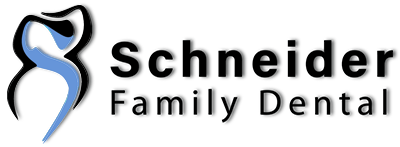The Latest in Dental Technology
Advancements in new dental technology offer better solutions for traditional oral health problems than ever before. The trend in dentistry is utilizing technology to make dentistry more comfortable, durable, efficient and natural-looking for the patient as possible. Patients and their dentists benefit from newer techniques that are less invasive and more dependable than the years of past. Procedures that formerly took multiple trips to the dentist or required multiple health care providers can often be performed in the comfort of one office by one qualified provider.
There are many new advancements in dentistry that your dentist may choose to offer for an enhanced state of comfort and improved oral health. These dental advances play an important role in the comfort of the patients as well as the dentists, dental specialists, hygienists, and office managers at the practice, allowing them to provide the highest standard of dental care possible.
Some technologies you may see the next time you visit your dentist may include:
CAD/CAM
Computer Assisted Design/Computer Assisted Manufacture technologies are used in various industries to provide highly accurate design of items or materials to be constructed. In the dental world this advanced technology allows for the design and fabrication of dental restorations that resemble the look and feel of natural teeth. This type of new dental technology can be used for dental bridges, inlays/onlays, porcelain veneers, and crowns.
Laser Dentistry
The benefit of laser dentistry is that it offers a much less invasive alternative to many procedures. The light energy that is emitted from lasers results in a shortened and almost painless healing period. This option is commonly available for the treatment of benign tumors, cold sores, crown lengthening, decay removal, gummy smile changes, dental fillings, tongue tie and speech impediment improvements, nerve regeneration for damaged nerves and blood vessels and scars, certain conditions related to sleep apnea, TMJ and tooth sensitivity.
Sedation Dentistry
Oral sedation dentistry is being utilized by more and more dentists because it is both safe and effective. Compared to more traditional IV sedation, oral sedation requires no needles and the patient experiences a conscious state of mind and can respond to the dentist. This is helpful for patients who fear the dentist or avoid trips because of anxiety of sitting in a dental chair.
Dental Implants
Dental implants are perhaps the leading dental technology advancement because of their fit and function as replacements of a tooth root. The implants integrate with the jaw bone and the procedure can be done in almost any adult who needs missing teeth replaced. The treatment time of this type of procedure has also been shortened as some patients can receive the crown that attaches to the implant immediately after tooth extraction as opposed to waiting six months after.
Air-Abrasion
Air-abrasion is a great dental advancement over the dental drill as it allows precise removal of decayed teeth without the use of a local anesthetic. The air-abrasion system uses blasts of pellets of air and aluminum oxide to treat tooth problems such as cavities.
CAT Scans
For dentists performing specialized procedures such as implants, 3-D imaging helps them to view and work on the jawbone or surrounding bone structure to produce more accurate results. Placing dental implants requires a precision touch and the CAT Scans provide dentists or Implantologists accurate imaging of where to place the restorative devices.
Digital X-rays
Besides the benefit of reducing exposure to radiation, digital radiographs allow images to be projected on a computer screen. This modern dental technique is also more comfortable and allows dentists to find problems with the teeth, mouth, and jaw.
Intraoral Camera
Intraoral cameras provide dentists with quality imaging equipment that can be used for patient education, higher case acceptance, and improved patient communication. The small lightweight cameras are used in the patient’s mouth to provide clear images of one’s mouth and can help in the detection and prevention of oral health problems.
NTI-tss Device
The NTI-tss Device is used for patients who suffer from TMD and migraine headaches. The device eliminates the need for more invasive surgery and can help with problems associated with Temporomandibular Joint (TMJ) discomforts. The device can be molded to fit teeth and is effective at reducing the pains associated with TMD.
Composite Resins
Composite Resins are used in many restorations such as bonding and veneers. They offer the advantage over older technologies such as gold or amalgam because they are better refined to replicate tooth colors and tooth function. Additionally they are easier to apply and more durable than ever before. Dental professionals can apply the material directly to the tooth and mold it to the shape and color that resembles natural teeth.
Digital Photography
Dentists utilizing digital photography can adapt a photograph for a patient so that they can provide them with an idea of what they will look like after a complex dental procedure such as a smile makeover or full mouth reconstruction. This is appealing to patients because they can work with their cosmetic dentist to inform them of what they want to look like and what their expectations are.




